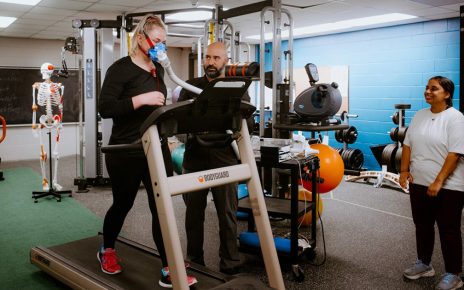The use of technology has impacted almost every other sector in the current society, including personal health management. From smart clothing, applications on smart phones to artificial intelligence, new technologies are enabling individuals to manage their own health effectively. This technology is allowing people than before to track their health, seek medical advice and adopt healthy lifestyles.
Wearable Health Trackers
There are several ways in which technology is being used to enhance personal health, one of these is through the use of health trackers such as Fitbit, Apple watch and Samsung Gear. These devices enable users to monitor values such as the number of steps taken, calories expended, pulse, stages of sleep, and others. These rich biometrics are beneficial to assist individuals in establishing realistic fitness objectives, track changes in their lifestyles to improve health, and identify possible medical complications. Real-time feedback and trends over time help to make the person more aware and involved with their health processes.
Health Apps and Telemedicine
Other related services such as health related mobile applications and telemedicine are also improving access and enabling patients to take on more holistic control of their health. People can quickly keep track of what they are eating in order to have a healthier diet, record symptoms in order to find out what causes them, relax and reduce stress, and many other actions depending on the apps individual requirements and wishes. Telemedicine entails the use of technology to consult with doctors over the phone or through video calls without limits of distance and time. These technologies are easy, intuitive approaches to help the public cope with chronic illnesses, new health issues, lifestyle changes, and overall, avoid unneeded doctor appointments or ER visits.
Patient Portals
Other informatics technologies that have supported increased patient engagement and personal responsibility for health include web-based patient portals connected to electronic medical records. Such portals make it possible for people to have an easy and secure way of accessing their test results, treatment plans, list of medicines, appointment schedules, as well as any form of communication with their providers. This openness saves patients on possibilities of missing errors, missing information in their documents, monitoring the progression of health conditions and planning for visits among other roles it plays to make patients active and active members of their care teams. Patient portals essentially lead to patient power and responsibility in the results of their treatment.
AI and DTx
Advanced AI systems and digital therapeutics solutions rely on data to offer tailored health advice and support. For instance, the use of chatbot symptom checker solutions can assist in identifying whether an individual should seek a face-to-face medical consultation. Some other AI virtual health assistants synchronise with wearable technology and health applications to provide timely, targeted guidance and information to support healthy lifestyles and disease prevention for those with chronic conditions in light of their specific health data and risk factors. As these technologies continue to evolve, there is potential for them to act as virtual members of the care team that provide advice and support in addition to human providers.
Risks and Limitations
As much as technology has opened up opportunities for individuals to oversee their health, there are some potential negative aspects and drawbacks to embrace too. Concerns arise in the areas of data privacy and security as health data is a sensitive information. Some worry that it can also dehumanize medicine or disrupt the interpersonal aspects of care delivery. Moreover, some inventions such as the symptom checker chatbot have not as high accuracy rates as direct examinations by professional service providers. There are also demographic biases about access – rural, elderly, disabled, and low income users may not be able to afford the latest applications and devices.
Like most disruptive innovations, achieving the full potential of health technologies with equal possibilities for all is still a work in progress. Mitigating risks is possible especially while embracing the benefits of technology for service delivery. Consequently, used and developed with diligence and respect for their potential, health technologies can undoubtedly be seen as beneficial tools in the promotion of more effective self-management and therefore, better health among the individuals and the population as a whole. There remains a high possibility for advanced technologies to enhance preventive care, chronic illness treatment, health promotion, and individualized lifestyle direction.




